#Carnegie Foundation
Text
Be(com)ing a National Doctoral/Professional University
Walter Rankin, Ph.D.
Vice Provost for Graduate, Professional & Continuing Studies

Fairfield University was recently reclassified by the Carnegie Foundation, moving from the category of a regional, Master’s comprehensive institution into the category of national Doctoral/Professional university. This is an exciting move for Fairfield, and a part of the University’s larger strategy, but what does it really mean? This brief article provides a summary as we embark on this next phase of our evolution as an academic institution.
The Carnegie Foundation first developed its classification system for describing colleges and universities in 1971. As described by the Foundation, Carnegie “uses publicly available empirical data about characteristics of students and faculty as well as the work of the institutions to identify categories of like institutions based on function and mission, including doctoral-granting institutions, comprehensive universities and colleges, liberal arts colleges, two-year colleges and institutions, professional schools, and other specialized institutions.”
The Carnegie Foundation defines three types of doctoral institutions. These are not rankings; rather, they are broad descriptions based on (a) the number and type of doctoral degrees being offered and awarded by the institution and (b) the amount of research expenditures reported by each institution to the National Science Foundation. The three types include Research 1 (R1) institutions with “very high research activity” and Research 2 (R2) institutions with “high research activity.” The third type is the Doctoral/Professional University (DPU), like Fairfield, Gonzaga, Hofstra, Pepperdine, Santa Clara, and over 150 others that focus on professional doctoral programs. In addition to serving as a data resource on research expenditures, the National Science Foundation defines doctoral degrees as either research or professional doctorates with the latter designed to provide students with skills and expertise for a specific profession. Professional doctorates include the MD and JD, for example, preparing students to become medical doctors and attorneys, respectively.
Additional professional doctorates include those offered at Fairfield, the Doctor of Nursing Practice in Anesthesia, Midwifery, Family Nurse Practitioner and Psychiatric Mental Health; the Doctorate in Clinical Nutrition, and the Doctor of Education. The University is exploring other degree areas presently, including the Doctorate in Business Administration (DBA) and the Doctorate in Public Health (Dr.PH) with the goal of creating a portfolio of doctoral programs that continue to prepare students using the best values of Jesuit pedagogy to care for the whole person and become leaders in the area of social justice.
#Fairfield University#Walter Rankin Ph.D.#Carnegie Foundation#Doctorate in Clinical Nutrition#Doctor of Nursing Practice#Doctor of Education#Doctorate in Business Administration (DBA)#Doctorate in Public Health (Dr.PH)#Jesuit
2 notes
·
View notes
Text
Andrew Mellon
Andrew Mellon: The Financier, Philanthropist, and Political Figure of the 20th Century
Andrew Mellon was a distinguished financier, philanthropist, and political figure who played a crucial role in the shaping of American fiscal policy during the early 20th century. He was respected for his financial acumen, which helped him build an extensive business empire. His considerable influence extended…
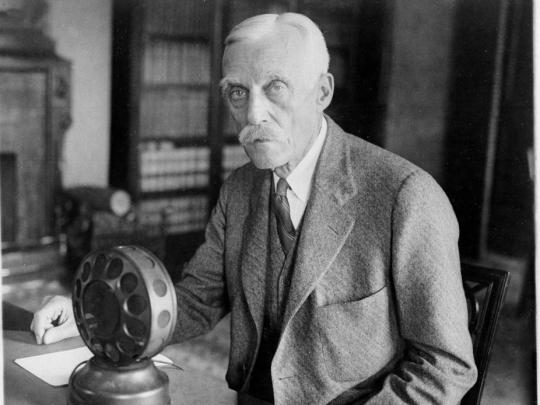
View On WordPress
#Andrew And Richard Mellon#Andrew Carnegie Mellon University#andrew mellon#Andrew Mellon Accomplishments#Andrew Mellon Captain Of Industry#Andrew Mellon Company#Andrew Mellon Definition#Andrew Mellon Economics#Andrew Mellon Education#Andrew Mellon Foundation#Andrew Mellon Foundation Endowment#Andrew Mellon Importance#Andrew Mellon Industry#Andrew Mellon Information#Andrew Mellon Interesting Facts#Andrew Mellon Organization#Andrew Mellon Related To Carnegie#Andrew Mellon Significance#Andrew Mellon Us History#Andrew Mellon Us History Definition
0 notes
Text
"New York City officials have agreed to restore more than $111 million in funding to libraries and cultural institutions, the City Council announced Thursday [June 27, 2024].
The agreement is a victory for residents and organizations who had been pushing back for months against budget cuts in the nation’s largest city and one of the world’s foremost cultural capitals.
In November, the city announced it would cut the budget of the New York Public libraries by $58.3 million in fiscal year 2025, and slash the budget for other cultural institutions, including the Bronx Zoo and Carnegie Hall, by $53 million. The new deal reverses those cuts, and is set to be finalized in a City Council vote Sunday...
“Our arts and cultural institutions and libraries are foundational pillars of our city, and New Yorkers depend on their services every day,” said New York City Council Speaker Adrienne Adams, thanking the mayor’s administration for reaching the deal. “The Council has consistently championed funding restorations for these institutions as a top priority, and we’re proud to reach an agreement with Mayor Adams and the administration to successfully secure these critical investments for them in the city budget.”
The news was received with collective approval from New York institutions that had been forced to cut hours and public access due to lack of funding.
“The Museum of the City of New York is delighted to learn of the restoration of cuts to the cultural sector,” the museum’s president Stephanie Hill Wilchfort told CNN in a statement.
“This support makes it possible for MCNY to be open seven days a week, starting on July 1,” said Wilchfort, who serves as Executive Vice Chair of the Cultural Institutions Group, a coalition of 34 non-profit organizations such as the city’s museums, gardens, and arts centers. “As such, the Museum’s exhibitions exploring history, popular culture, and art will be open to the public on Tuesdays and Wednesdays for the first time since the pandemic. City support also allows the Museum to operate as a cooling center, open at no charge to anyone who seeks relief from warm weather.”
The city’s three public library systems — New York, Queens, and Brooklyn — issued a joint statement thanking the administration, the city council and New York residents, who overwhelmingly supported the campaign to restore library budgets. More than 174,000 people sent letters to City Hall in support of the “No Cuts to Libraries!” campaign since the cuts were announced in November [2023].
“This funding will allow us to resume seven-day service, a priority for many New Yorkers,” the libraries said in a statement shared with CNN. “We expect that service to begin in the coming weeks, bringing our branches back to the same hours of operation prior to the November 2023 cuts. The funding also allows us to continue universal six-day service, which New Yorkers have enjoyed for nearly a decade.”
-via CNN, June 28, 2024
686 notes
·
View notes
Text
The Sacklers woulda gotten away with it if it wasn't for those darned meddling feds

The saga of the Sacklers, a multigenerational billionaire crime family of mass-murdering dope-peddlers, is an enraging parable about how the wealthy, the courts, and sadistic high-powered lawyers collude to destroy the lives of millions, profit handsomely, and evade justice.
But there's an unexpected twist to this tale. After the Sacklers procured a sham bankruptcy that denied their victims the right to sue while leaving their fortune largely intact, the Supreme Court – yes, this Supreme Court – saw through the scam and froze the process, pending a full hearing:
https://www.nytimes.com/2023/08/10/us/supreme-court-purdue-pharma-opioid-settlement.html
The Sacklers basically invented modern, legal dope peddling. Arthur Sackler, the family's original crime-boss, revived the practice of direct-to-consumer drug marketing, dormant since the death of the medicine show, to peddle Valium. An aggressive and shrewd lobbyist, Arthur built the family fortune and, more importantly, its connections:
https://www.timesofisrael.com/how-the-sackler-family-built-a-pharma-dynasty-and-fueled-an-american-calamity/
A generation later, the family's business company created Oxycontin, and procured misleading and false research about the drug's safety kickstarting the opioid epidemic, whose American body-count is closing in on a million dead. Armed with inflated claims about opioid safety, the Sacklers' pharma reps bribed, cajoled and tricked doctors into writing millions of prescriptions for oxy.
This scam had a natural best-before date. As ODs flooded America's ERs and bodies piled up in America's morgues, it became increasingly clear that something was rotten. The Sacklers pursued a multipronged campaign to keep the truth from coming to light, and to keep the billions flowing.
On the one hand, they hired McKinsey to find novel ways to encourage doctors to keep writing prescriptions and to convince pharmacists to turn a blind eye to abuse. McKinsey had all kinds of great ideas here, including paying pharma distributors cash bonuses for every overdose death in their territory:
https://www.nytimes.com/2021/02/03/business/mckinsey-opioids-settlement.html
When the issue of these deaths came up in public, the Sacklers blamed "criminal addicts" for their own misery, stigmatizing both people who desperately needed pain relief and the people who'd been deliberately hooked on the Sacklers' products. The legacy of this smear campaign is still with us, both in the contempt for people struggling with addiction and in the cruel barriers placed between people in unbearable agony and medical relief.
But mostly, the Sacklers kept their names out of it. They laundered their reputations by donating a homeopathic fraction of their vast drug fortune to art galleries and museums in a bid to make their names synonymous with good deeds.
The Sacklers didn't invent this trick. Think of the way that history's great monsters – Carnegie, Mellon, Rockefeller, Ford – are remembered today for the foundations and charities that bear their names, not for the untold misery they inflicted on their workers, their crimes against their customers, and the corruption of governments.
But the Sacklers made those Gilded Age barons seem like amateurs. They invented a modern elite philanthropy playbook that Anand Giridharadas documents in his must-read Winners Take All, about the charity-industrial complex that washes away an ocean of blood with a trickle of money:
https://memex.craphound.com/2018/11/10/winners-take-all-modern-philanthropy-means-that-giving-some-away-is-more-important-than-how-you-got-it/
As part of this PR exercise, the individual Sacklers kept their names and images out of the public eye. For years, there were virtually no news-service photos of individual Sacklers. When journalists dared to criticize the family, they used vicious attack-lawyers to intimidate them into retractions and silence (I was threatened by the Sacklers' lawyers).
They also worked their media mogul pals, like Mike Bloomberg, who added their names to the "Friends of Mike" list that Bloomberg reporters were required to consult before writing negative coverage:
https://pluralistic.net/2020/02/29/friends-of-mike-enemies-of-the-people/#sacklerbergs
But Stein's Law says that "anything that can't go on forever will eventually stop." As lawsuits mounted, the Sacklers found themselves increasingly synonymous with death, not charitable works. But like any canny criminal, the Sacklers had a getaway plan.
First, they extracted vast sums from Purdue and shifted it into offshore financial secrecy havens:
https://www.reuters.com/article/us-purduepharma-bankruptcy/sacklers-reaped-up-to-13-billion-from-oxycontin-maker-u-s-states-say-idUSKBN1WJ19V
Even as this money was disappearing into legal black holes, the Sacklers demanded – and received – extraordinary protection from the courts, who aggressively sealed testimony and materials presented through discovery:
https://www.reuters.com/investigates/special-report/usa-courts-secrecy-judges/
When this gambit finally failed, the Sacklers insisted that were down to their last $4 billion, and, with trillions in claims pending against them, they declared bankruptcy.
When a normal person declares bankruptcy, they are required to divest themselves of nearly everything of value they possess, and then still find themselves hounded by cruel arm-breakers who deluge them with threatening calls and letters:
https://pluralistic.net/2021/05/19/zombie-debt/#damnation
But for the richest people in America, bankruptcy is merely a way to cleanse one's balance sheet of liabilities for any atrocity you may have committed on the way, without giving up your fortune.
The Sacklers are a case-study in how a corrupt bankruptcy can be conducted.
Purdue Pharma presents a maddening case-study in the corrupt benefits of bankruptcy. When it was announced in March, many were outraged to learn that the Sacklers were going to walk away with billions, while their victims got stiffed.
First, they converted their victims' right to compensation into "property" that the Sacklers themselves owned. This transferred jurisdiction over these claims from the regular court system to the bankruptcy court. A bankruptcy judge – not a jury – would decide how much each of these claims was worth, and then what how much of that worth these victims (now recast as creditors) would be entitled to through the bankruptcy.
Thus tens of thousands of claims were nonconsensually settled without a trial, by an administrative judge with no criminal jurisdiction, not a federal judge who'd undergone Senate confirmation:
https://pluralistic.net/2021/03/31/vaccine-for-the-global-south/#claims-extinguished
These "coercive restructuring techniques" are not available to everyday people who are drowning in student debt or credit-card bills – these are the exclusive purview of the wealthiest Americans, who enjoy a completely different bankruptcy system that is rigged in their favor.
Three judges – David Jones and Marvin Isgur of Houston and Bob Drain of New York – hear 96% of the country's large corporate bankruptcies:
https://www.creditslips.org/creditslips/2021/05/judge-shopping-in-bankruptcy.html
These judges are unbelievably horny for corporations, embracing a legal theory "that casts the invention of the limited liability corporation alongside that of the steam engine as a paradigmatic development in the pursuit of prosperity":
https://prospect.org/justice/how-do-you-solve-a-problem-like-the-sacklers-purdue-pharma-bankruptcy/
Now there are more than three bankruptcy judges in America, so how do the nation's biggest companies get their cases heard by these three enthusiastic Renfields for corporate vampirism?
They cheat.
For example: when GM was facing bankruptcy, it argued that it was a New York company on the basis that it owned a single Chevy dealership in Harlem, and got in front of Judge Drain.
The Sacklers were – characteristically – even more brazen. They really wanted to get their case in front of Judge Drain, the nation's most enthusiastic supporter of "third party releases," through which bankrupt billionaires can wipe the slate clean, securing dismissals of all claims by the people they wronged.
Drain is also uniquely hostile to independent examiners, "an independent third-party appointed by the court to investigate 'fraud, dishonesty, incompetence, misconduct, mismanagement, or irregularity…by current or former management of the debtor."
https://papers.ssrn.com/sol3/papers.cfm?abstract_id=3851339
If you're the Sacklers, hoping to keep two thirds of your billions and extinguish all claims by your victims, there is no better helpmeet than Judge Robert Drain of the Southern District of New York.
So, 192 days before filing for bankruptcy, the Sacklers opened an office in White Plains, New York (a company may claim jurisdiction in a specific court once they've operated a business there for 180 days).
Then they filed a bankruptcy in which they altered the metadata on their casefile, inserting the code for a Westchester county hearing into the machine-readable, human-invisible parts of the documents they uploaded to the federal Case Management/Electronic Case Files (CM/ECF) system (they also captioned the case with "RDD, for "Robert D Drain").
They chose their judge, and the judge obliged. UCLA Law's Lynn LoPucki is one of the leading scholars of these bankruptcy "megacases," and has written extensively on why these three judges are so deferential to corporate criminals seeking to flense themselves of culpability. She sees judges like Drain motivated by "personal aggrandizement and celebrity and ability to indirectly channel to the local bankruptcy bar. The judge is the star and the ringmaster of a megacase – very appealing to certain personalities."
Thus, these judges are "willing and eager to cater to debtors to attract business…[an] assurance to debtors that…these judges will not transfer out cases with improper venue or rule against the debtor…"
https://www.fulcrum.org/concern/monographs/02870w66d
This kind of judge-shopping goes beyond the Sacklers; the cases that Drain and co preside over make a mockery of the idea of America as a land of equal justice. "Prepack" and "drive-through" bankruptcies are reliable get-out-of-jail-free cards for capitalism's worst monsters: private equity firms.
Whether PE murdered your grandmother by buying her care-home and putting each worker in charge of 30 seniors:
https://www.washingtonpost.com/local/portopiccolo-nursing-homes-maryland/2020/12/21/a1ffb2a6-292b-11eb-9b14-ad872157ebc9_story.html
or poisoned your kids by filling your neighborhood with carcinogens:
https://www.webmd.com/special-reports/ethylene-oxide/20190719/residents-unaware-of-cancer-causing-toxin-in-air
limited liability wipes the slate clean.
30% of America's bankruptcies are private equity companies using the bankruptcy system to wipe away claims for their misdeeds, while keeping a fortune, thanks to the shield of limited liability.
Take Millennium Health, JamesS lattery's fake drug-testing company, which promised to help nursing homes figure out whether seniors were abusing (or selling) their meds by testing their piss for angel dust and other drugs. Slattery defrauded Medicare and Medicaid for millions, borrowed $1.8 billion (Slattery got $1.3 billion of that). He eventually walked away from this fraud after paying a mere $256m to settle all claims, and kept a fortune in assets, including the 40 vintage planes his private company ("Pissed Away LLC" – I am not making this up) owned:
https://prospect.org/justice/how-do-you-solve-a-problem-like-the-sacklers-purdue-pharma-bankruptcy/
For the wealthy, bankruptcy is the sport of kings, a way to skip out on consequences. For the poor, bankruptcy is an anchor – or a noose. This is by design: judges who preside over elite bankruptcies speak of their protagonists as heroic "risk takers" and tiptoe around any consequences, lest these titans be chained to a mortal's fate, costing us all the benefits of their entrepreneurial genius.
PE companies helped the Sacklers design their own bankruptcy strategy, and it was a standout, even by the standards of Bob Drain and his kangaroo bankruptcy court. But now, the Supreme Court has pumped the brakes on the whole enterprise.
The judges ruled that the exceptions the Sacklers took advantage of were intended for bankrupts in "financial distress" – not billionaires with vast fortunes hidden overseas. In so doing, the court threatens all manner of corrupt arrangements, from "the Boy Scouts, wildfires and allegations of sexual abuse in the church diocese — where third parties get a benefit from a bankruptcy they themselves aren’t going through.”
The case was brought by the DoJ's US Trustee Program, which lost in the Second Circuit when it tried to halt the Purdue bankruptcy and argued that the Sacklers themselves had to declare bankruptcy to discharge the claims against them.
Now the Supremes have hit pause on the bankruptcy the Second Circuit approved, and will hear the case themselves. It's only one step on a long road, but it's an unprecedented one. Some of the country's filthiest fortunes are riding on the outcome.

Going to Defcon this weekend? I’m giving a keynote, “An Audacious Plan to Halt the Internet’s Enshittification and Throw it Into Reverse,” tomorrow (Aug 12) at 12:30pm, followed by a book signing at the No Starch Press booth at 2:30pm!
https://info.defcon.org/event/?id=50826


I’m kickstarting the audiobook for “The Internet Con: How To Seize the Means of Computation,” a Big Tech disassembly manual to disenshittify the web and bring back the old, good internet. It’s a DRM-free book, which means Audible won’t carry it, so this crowdfunder is essential. Back now to get the audio, Verso hardcover and ebook:
http://seizethemeansofcomputation.org

If you'd like an essay-formatted version of this thread to read or share, here's a link to it on pluralistic.net, my surveillance-free, ad-free, tracker-free blog:
https://pluralistic.net/2023/08/11/justice-delayed/#justice-redeemed

Image:
Edwardx (modified)
https://commons.wikimedia.org/wiki/File:Serpentine_Sackler_Gallery,_June_2016_05.jpg
CC BY-SA 4.0
https://creativecommons.org/licenses/by-sa/4.0/deed.en
#scotus#us trustee program#drive-through bankruptcy#coercive restructuring techniques#blood money#opioids#opioid epidemic#oxycontin#purdue pharma#elite philanthropy#reputation laundering#elite impunity#sacklers#judge drain#sdny#bankruptcy#bankruptcy shopping#friends of mike#pluralistic#debt#mckinsey
171 notes
·
View notes
Text


On February 25th 1888 a conference advocated the adoption of leaving certificates in Scottish schools.
Scotland has long enjoyed an international reputation as historically one of the best-educated societies in the world. The foundation for this reputation was laid in the 17th century and was the result of Calvinist emphasis on reading the Bible. Putting men and women in touch with the word of God was seen by the Scottish authorities and clergy as of paramount importance. To achieve this goal schools paid for by the Church of Scotland and local landowners were established in all rural parishes and burghs by an Act of Parliament in 1696. These educational establishments were run by the Church and were open to all boys and girls regardless of social status.
The democratic nature of the Scottish system so impressed the 18th century writer Daniel Defoe that he remarked that while England was a land ‘full of ignorance’, in Scotland the 'poorest people have their children taught and instructed’. The openness of the Scottish system ran all the way from the schoolroom to the university. A talented working class boy the 'lad o'pairts’ through intelligence and hard work and by utilising a generous system of bursaries was able to gain a university education, something largely unthinkable in England in the 18th century.
That’s not to say it was perfect on further inspection I found out that even in 1892 when all elementary and most secondary education became free, and scholarships were more widely available, few working-class children were able to take advantage of the opportunity. Only just under 5% of pupils attended a secondary school in Scotland in 1897. The real priority for children from working-class backgrounds was to find work and begin earning a wage.
For a small nation Scotland was particularly well-endowed with universities, boasting five in the 19th century - a figure which included Aberdeen’s Marischal and King’s Colleges. The universities were considered to be national, public institutions and, therefore, less elitist than Oxford or Cambridge in England. Because of this they were said to be more open to working people and, indeed, over 18% of the student population of Glasgow university in 1860 was from working-class backgrounds, quite a high number considering the low percentages of working class children who were educated.
The existence of a substantial number of working class students has given rise to the view that universities in Scotland were more democratic and based more on merit than the class-ridden universities of England. The wider implication was that Scotland was a less class obsessed society than England.
Again all was not as it seemed, and while we had a working class getting into University, the system was somewhat broken in a way. At Glasgow University in 1889-90, out of 225 students taking the junior Latin class 200 failed. The quality of university education in Scotland was generally poor and inferior to that offered in England. The low quality was mainly due to the fact that there was no university entrance examination and, therefore, children could enter the system as early as fourteen or fifteen, the 1888 act would possibly put this to rights.
As a result, philosophy, which had previously formed the core of the arts degree, was made optional. Students were also forced to compete for bursaries and this acted as an unofficial entrance examination. The setting up in 1901 of the Carnegie Trust Fund, set up by the great philanthropist Andrew Carnegie, provided a further source of assistance and by 1930 70% of university students in Scotland were receiving awards from the fund.
The numbers of students in higher education institutions increased from 4,400 in 1830 to 6,000 in 1900, to 10,000 in 1938. At Glasgow University, working-class students increased as a percentage of the total, from 18.6% in 1860 to 24% in 1910.
The period from 1900 to the outbreak of War in 1939 did not witness the same degree of change in the educational system as had occurred in the 19th century. However, there were important developments in the sphere of primary and secondary education. These changes did little to alter the class bias of education, but collectively they made important contributions to the
creation of an all encompassing modern educational system in Scotland.
Education in Scotland has been the subject of much myth-making as regards the openness of the system and the quality of provision. In the 19th and the first half of the 20th century, the educational system catered mainly for an elite section of Scottish society. Although the door to higher education was more open than in England, workers and their families, women and Catholics in general were excluded. For these groups, education was sparse and the quality poor.
Legislation gradually improved the access of all groups to better education, but it was only after the introduction of comprehensive education in 1965 that attempts were made to provide adequate standards for all children in Scotland.
58 notes
·
View notes
Text
‘The Godfather of A.I.’ Leaves Google and Warns of Danger Ahead
(Reported by Cade Metz, The New York Times)
Geoffrey Hinton was an artificial intelligence pioneer. In 2012, Dr. Hinton and two of his graduate students at the University of Toronto created technology that became the intellectual foundation for the A.I. systems that the tech industry’s biggest companies believe is a key to their future.
On Monday, however, he officially joined a growing chorus of critics who say those companies are racing toward danger with their aggressive campaign to create products based on generative artificial intelligence, the technology that powers popular chatbots like ChatGPT.
Dr. Hinton said he has quit his job at Google, where he has worked for more than a decade and became one of the most respected voices in the field, so he can freely speak out about the risks of A.I. A part of him, he said, now regrets his life’s work.
“I console myself with the normal excuse: If I hadn’t done it, somebody else would have,” Dr. Hinton said during a lengthy interview last week in the dining room of his home in Toronto, a short walk from where he and his students made their breakthrough.
Dr. Hinton’s journey from A.I. groundbreaker to doomsayer marks a remarkable moment for the technology industry at perhaps its most important inflection point in decades. Industry leaders believe the new A.I. systems could be as important as the introduction of the web browser in the early 1990s and could lead to breakthroughs in areas ranging from drug research to education.
But gnawing at many industry insiders is a fear that they are releasing something dangerous into the wild. Generative A.I. can already be a tool for misinformation. Soon, it could be a risk to jobs. Somewhere down the line, tech’s biggest worriers say, it could be a risk to humanity.
“It is hard to see how you can prevent the bad actors from using it for bad things,” Dr. Hinton said.
After the San Francisco start-up OpenAI released a new version of ChatGPT in March, more than 1,000 technology leaders and researchers signed an open letter calling for a six-month moratorium on the development of new systems because A.I. technologies pose “profound risks to society and humanity.”
Several days later, 19 current and former leaders of the Association for the Advancement of Artificial Intelligence, a 40-year-old academic society, released their own letter warning of the risks of A.I. That group included Eric Horvitz, chief scientific officer at Microsoft, which has deployed OpenAI’s technology across a wide range of products, including its Bing search engine.
Dr. Hinton, often called “the Godfather of A.I.,” did not sign either of those letters and said he did not want to publicly criticize Google or other companies until he had quit his job. He notified the company last month that he was resigning, and on Thursday, he talked by phone with Sundar Pichai, the chief executive of Google’s parent company, Alphabet. He declined to publicly discuss the details of his conversation with Mr. Pichai.
Google’s chief scientist, Jeff Dean, said in a statement: “We remain committed to a responsible approach to A.I. We’re continually learning to understand emerging risks while also innovating boldly.”
Dr. Hinton, a 75-year-old British expatriate, is a lifelong academic whose career was driven by his personal convictions about the development and use of A.I. In 1972, as a graduate student at the University of Edinburgh, Dr. Hinton embraced an idea called a neural network. A neural network is a mathematical system that learns skills by analyzing data. At the time, few researchers believed in the idea. But it became his life’s work.
In the 1980s, Dr. Hinton was a professor of computer science at Carnegie Mellon University, but left the university for Canada because he said he was reluctant to take Pentagon funding. At the time, most A.I. research in the United States was funded by the Defense Department. Dr. Hinton is deeply opposed to the use of artificial intelligence on the battlefield — what he calls “robot soldiers.”
As companies improve their A.I. systems, he believes, they become increasingly dangerous. “Look at how it was five years ago and how it is now,” he said of A.I. technology. “Take the difference and propagate it forwards. That’s scary.”
Until last year, he said, Google acted as a “proper steward” for the technology, careful not to release something that might cause harm. But now that Microsoft has augmented its Bing search engine with a chatbot — challenging Google’s core business — Google is racing to deploy the same kind of technology. The tech giants are locked in a competition that might be impossible to stop, Dr. Hinton said.
His immediate concern is that the internet will be flooded with false photos, videos and text, and the average person will “not be able to know what is true anymore.”
He is also worried that A.I. technologies will in time upend the job market. Today, chatbots like ChatGPT tend to complement human workers, but they could replace paralegals, personal assistants, translators and others who handle rote tasks. “It takes away the drudge work,” he said. “It might take away more than that.”
But that may be impossible, he said. Unlike with nuclear weapons, he said, there is no way of knowing whether companies or countries are working on the technology in secret. The best hope is for the world’s leading scientists to collaborate on ways of controlling the technology. “I don’t think they should scale this up more until they have understood whether they can control it,” he said.
Dr. Hinton said that when people used to ask him how he could work on technology that was potentially dangerous, he would paraphrase Robert Oppenheimer, who led the U.S. effort to build the atomic bomb: “When you see something that is technically sweet, you go ahead and do it.”
He does not say that anymore.
(Reported by Cade Metz, The New York Times)
184 notes
·
View notes
Note
america invented eugenics?
the USA specifically did. we used it most acutely against immigrants, against institutionalized people, the mentally ill, the disabled, and anyone who wasn’t white. and it very much inspired the nazi party. eugenics is deeply and quietly entrenched in our history. do you know of Hellen Keller? she believed in eugenics. yea seriously
A lot of early thinkers and progressives were eugenicists too.
The American eugenics movement received extensive funding from various corporate foundations including the Carnegie Institution, Rockefeller Foundation, and the Harriman railroad fortune. In 1906, J.H. Kellogg provided funding to help found the Race Betterment Foundation in Battle Creek, Michigan.[13] The Eugenics Record Office (ERO) was founded in Cold Spring Harbor, New York in 1911 by the renowned biologist Charles B. Davenport, using money from both the Harriman railroad fortune and the Carnegie Institution. As late as the 1920s, the ERO was one of the leading organizations in the American eugenics movement.
In years to come, the ERO and the American Eugenics Society collected a mass of family pedigrees and provided training for eugenics field workers who were sent to analyze individuals at various institutions, such as mental hospitals and orphanage institutions, across the United States. Eugenicists such as Davenport, the psychologist Henry H. Goddard, Harry H. Laughlin, and the conservationist Madison Grant (all of whom were well-respected during their time) began to lobby for various solutions to the problem of the "unfit."
Davenport favored immigration restriction and sterilization as primary methods; Goddard favored segregation in his The Kallikak Family; Grant favored all of the above and more, even entertaining the idea of extermination.
Here’s the Wikipedia about the subject if you want to keep reading about it
TW for forced sterilization, eugenics (obviously), genocide, abuse.
#I’m#not a historian or academic I’m just some guy don’t quote me#eugenics#american eugenics#racism#xenophobia
110 notes
·
View notes
Text





George Mauersberger completed the foundations program at Pratt Institute in Brooklyn, NY in 1974. He received a Bachelor of Fine Arts degree in Drawing from Carnegie-Mellon University in Pittsburgh, PA in 1978, and a Master of Fine Arts degree in Painting from Ohio University, Athens in 1983. He worked as a Professor of Drawing at Cleveland State University from 1987-2019, while also serving eight years as Art Department Chair. He was named Professor Emeritus in 2019.
After beginning his career as an illustrator with clients including Ketchum, Inc., Industry Week, and The Plain Dealer, Mauersberger began exhibiting drawings and works on paper in 1983.
28 notes
·
View notes
Text

Nicole Eisenman, “Beer Garden with A.K.” (2009), oil on canvas, 65 × 82 inches (image courtesy De Ying Foundation; photo by Bryan Conley, © 2023 Carnegie Museum of Art, Pittsburgh)
18 notes
·
View notes
Text
450 Million-Year-Old Organism Finds New Life in Softbotics - Technology Org
New Post has been published on https://thedigitalinsider.com/450-million-year-old-organism-finds-new-life-in-softbotics-technology-org/
450 Million-Year-Old Organism Finds New Life in Softbotics - Technology Org
In collaboration with palaeontologists from Spain and Poland, researchers at Carnegie Mellon University used fossil evidence to engineer a soft robotic replica of a pleurocystitid. This marine organism existed nearly 450 million years ago and is believed to be one of the first echinoderms capable of movement using a muscular stem.
Pleurocystitid fossil and pleurocystitid robot replica. Image Credit: Carnegie Mellon University
Published in Proceedings of the National Academy of Sciences, the U.S. National Science Foundation-supported research seeks to broaden modern perspective of animal design and movement by introducing a new a field of study — paleobionics — aimed at using Softbotics, robotics with flexible electronics and soft materials, to understand the biomechanical factors that drove evolution using extinct organisms.
“Softbotics is another approach to inform science using soft materials to construct flexible robot limbs and appendages,” said Carmel Majidi, the lead author of the study. “Many fundamental principles of biology and nature can only fully be explained if we look back at the evolutionary timeline of how animals evolved. We are building robot analogues to study how locomotion has changed.”
[embedded content]
With humans’ time on earth representing only 0.007% of the planet’s history, the modern-day animal kingdom that influences understanding of evolution and inspires today’s mechanical systems is only a fraction of all creatures that have ever existed.
Image credit: CMU
Using fossil evidence to guide their design and a combination of 3D-printed elements and polymers to mimic the flexible columnar structure of the moving appendage, the team demonstrated that pleurocystitids were likely able to move over the sea bottom using a muscular stem to push themselves forward.
Despite the absence of a current day equivalent, — echinoderms have since evolved to include modern day starfish and sea urchins — pleurocystitids have been of interest to paleontologists due to their pivotal role in echinoderm evolution.
Image credit: CMU
The researchers determined that wide sweeping movements were likely the most effective motion and that increasing the length of the stem significantly increased the animals’ speed without forcing it to exert more energy.
Now that the researchers have demonstrated that they can use Softbotics to engineer extinct organisms, they hope to explore other animals, like the first organism that could travel from sea to land — something that can’t be studied in the same way using conventional robot hardware.
“Bringing a new life to something that existed nearly 500 million years ago is exciting in and of itself,” said mechanical engineer and study co-author Phil LeDuc. “But we aren’t just looking at fossils in the ground, we are trying to better understand life through working with paleontologists.”
Source: NSF
#3d#Animals#approach#Biology#Building#Carnegie Mellon University#Chemistry & materials science news#Collaboration#Design#earth#Electronics#energy#Engineer#Evolution#Explained#Featured video#flexible electronics#fossil#Fossils#Foundation#Fraction#Fundamental#Hardware#History#how#humans#Ideas#it#life#limbs
0 notes
Text
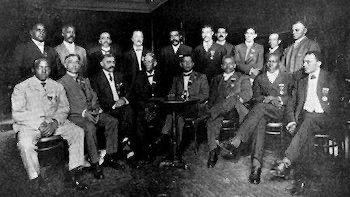
The National Negro Business League (August 23 & 24, 1900) was founded by Booker T. Washington in Boston. The league, which predated the US Chamber of Commerce by 12 years, strives to enhance the commercial and economic prosperity of the African American community. The NNBL was incorporated in 1901 in New York and established hundreds of chapters across the US. In 1966, the National Negro Business League was reincorporated in DC and renamed the National Business League.
Booker T. Washington believed that solutions to the problem of racial discrimination were primarily economic and that African American entrepreneurship was vital. He founded the league to further the economic development of African American businesses to achieve social equality in American society. Members in the league included small business owners, farmers, doctors, lawyers, craftsmen, and other professionals. The league maintained directories for all major US cities and incorporated African American contacts in numerous businesses.
Oftentimes, white business leaders addressed the National Business League at their annual conventions. Booker T. Washington himself kept contact with members of the white corporate elite, such as Andrew Carnegie and Julius Rosenwald, president of Sears, Roebuck, and Co.
The league established the Booker T. Washington Foundation in 1967 as a public, non-private operating foundation to serve as the research and development arm of the organization. It established the National Student Business League in 1974 as its collegiate division. Although the influence of the league declined since its peak in the early half of the 20th century, the organization still exists today and is headquartered in Atlanta with a second “federal” office in DC. The National Business League continues to promote economic enterprise and financial literacy for African Americans throughout the US and international trade with Africa and the African Diaspora. #africanhistory365 #africanexcellence
7 notes
·
View notes
Text



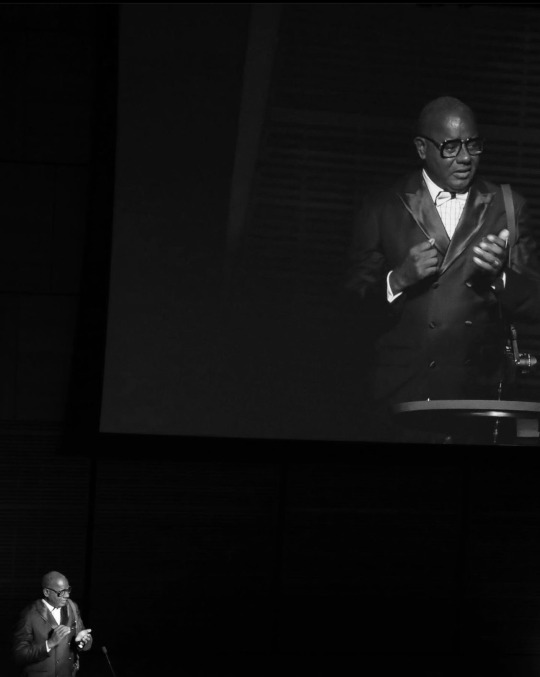
What an EPIC night, Brother Jamel Shabazz received the prestigious @luciefoundation Award presented by Peter Kunhardt, Jr. Executive Director for The Gordon Parks Foundation at Carnegie Hall… So well deserved.
Jamel Shabazz is best known for his iconic photographs of New York City during the 1980s. A documentary, fashion, and street photographer, he has authored 12 monographs and contributed to over three dozen other photography related books.
His photographs have been exhibited worldwide and his work is housed within the permanent collections of The Whitney Museum, The Brooklyn Museum, The Studio Museum in Harlem, The Smithsonian’s National Museum of African American History and Culture, The Fashion Institute of Technology, The Art Institute of Chicago and the Getty Museum.
Over the years, Shabazz has instructed young students at the Studio Museum in Harlem’s “Expanding the Walls” project, The Schomburg Center for Research in Black Culture “Teen Curator’s” program, and the Bronx Museum’s “Teen Council.” He is also the 2018 recipient of the Gordon Parks award for excellence in the arts and humanitarianism and the 2022 awardee of the Gordon Parks Foundation/Steidl book prize. His goal as an artist is to contribute to the preservation of world history and culture.
It is an honor to collaborate with Brother Jamel Shabazz on the @albeesquaremall book that has been years in the making.
Another one of Brooklyn’s Finest 👑🏆🫡 @jamelshabazz
CARTER™️ Magazine
#carter magazine#carter#historyandhiphop365#wherehistoryandhiphopmeet#history#cartermagazine#today in history#staywoke#blackhistory#blackhistorymonth#jamel shabazz
31 notes
·
View notes
Text
September 10, 2023 Update from the Battleship Texas Foundation

"DRY DOCK TOURS
Dry Dock Tours are BACK! Discount available for those who return. For more information please visit: battleshiptexas.org/drydock

Dry Dock Tour time!
SHIP REPAIRS

Scaffolding used in the repairs to the ship's superstructure.
TORPEDO BLISTERS - The new torpedo blisters are a slightly different design and square off at the bottom below the waterline. This design change will make the new blisters easier to maintain increasing their longevity.


The stern (portside) of Battleship Texas.

The end of the ship's torpedo blisters. (Aft starboard)

New torpedo blister bottoms.
COATING - The inside of the blisters, and the ship's hull will be coated to protect against possible corrosion.


Left: Doubler plates installed where the torpedo blisters used to taper to the ship's hull.
Right: The bottom and end of the starboard side torpedo blisters.
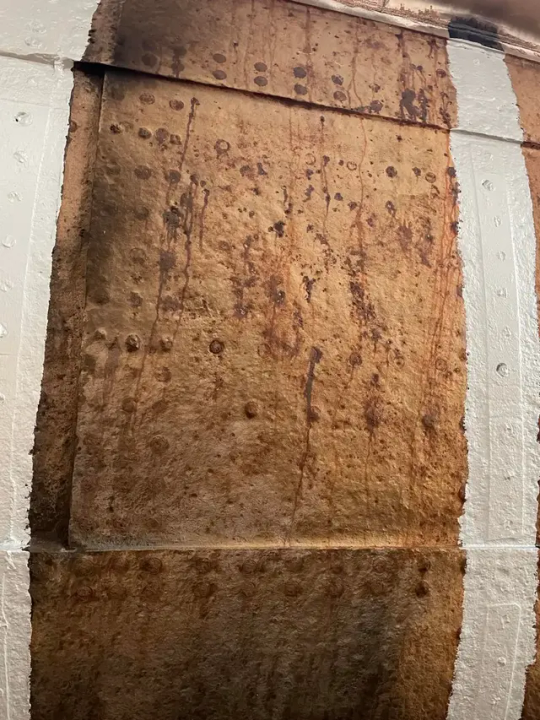
The ship's original hull which was covered by a torpedo blister.
LEAK TESTING - All welds continue to be tested for leaks. They are done via vacuum box, dye penetrant or magnaflux depending on the area.

A cut was made between the main condenser induction sea chests. These pipes are 17" in diameter.

Doubler plates installed where the torpedo blisters used to taper to the ship's hull.

The ship's original hull which was covered by a torpedo blister. Doubler plates will cover the area to the left.

The main condenser induction sea chests. These pipes are 17" in diameter.
DECK REPAIRS - Gulf Copper's yard workers have concluded repairing the deck on the ship's Signal Bridge and have begun working on the deck above, the Navigation Bridge. A part of the deck repairs includes sand blasting the underside of the underside and painting on a coat of primer.


Repairs being made underneath the navigation bridge.

Original Carnegie steel used in the construction of the ship's navigation bridge.


Repairs to be made on the navigation bridge.
While these repairs continue, we have started preparing to back the ship out of the dock. To do this, we turn the helm around.
(Joking)



Repairs being made to the ship's signal bridge.

Repairs being made to the ship's signal bridge.
To the left is an original ammunition scuttle that was uncovered.
The semi-circle is the original splinter shield that went around the 1.1 anti-aircraft guns.
The rectangle is replacement steel.
AFT FIRE CONTROL TOWER - Work continues in the AFCT as the old grating that was installed in 1988 has been completely removed and replaced with a steel deck. Small repairs to the bulkhead are currently ongoing as the plan is to have it look as it did in 1945.

The ship's aft fire control.

Looking up inside aft fire control. This space was a vegetable locker.




New steel decking going in the aft fire control tower.

Looking af from the ship's aft fire control
Live, Laugh, And Flood your Torpedo Blisters
Visit our website at: battleshiptexas.org"
Posted by Hunter Miertschin on the Battleship Texas Foundation Group Facebook page: link
#Battleship Texas#Battleship Texas Foundation#Update#USS Texas (BB-35)#USS Texas#New York Class#Dreadnought#Battleship#Warship#Ship#Drydock#Dry Dock#Galveston#Texas#repairs#Gulf Copper#Restoration#September#2023#red sea
36 notes
·
View notes
Text
I went and applied for a new library card, today. The circulation lady was pleasant in a vanilla ice cream vs an "old book smell" kind of way.
On my drive in I'd been pondering whether the good that has come from the public library system would, on a karmic scale, be enough to redeem Andrew Carnegie from his life of wealth hoarding, whether that rich man was able to fit through the proverbial needle's eye, posthumously. I made room for Nobel in this scenario, as well.
Feeling frisky since it is almost 20 degrees in northern Illinois, I asked Ms. Librarian's opinion. It was a fiasco. She could not understand the question. I explained how libraries were Carnegie's legacy, and that he was an evil captain of industry. Not only did she not know these things. She did not want to know these things, or to be asked such a provocative question. I watched as the shutters came down over her eyes, her smile, still present was soft and suspicious.
I believe I am now a "crazy library patron" in my new town. This does not bother me. In fact, I'm considering developing a persona specifically for library visits going forward. I believe those who deal with the public need innocuous gossip topics. My goal shall be to have the staff inquire, "what was she wearing, today?" Or, "What soapbox was she prepared to die on this time?"
I would like to ask if any other deep thinkers out there have any opinions on my original question, though. First, is redemption an actual possibility in your opinion. Second, if we consider Nobel's contribution to weaponry, which I would rate a 2,000,0000 out of 10 on the bad deeds side of the continuum, does his Foundation and awards system create enough good juju to redeem him? Same for Carnegie. Talk amongst yourself. Or, preferably, reblog with your thoughts, if you will.
I wouldn't usually do this but I'm tagging in some mutuals because I actually want opinions @mysticallion @brazenbastard @vampysquid @arianrhodsgarden @aireandsugar If you have opinions without my putting you in the tags, even better.
-Dagney
#stir crazy, maybe #does a circulation clerk need to be erudite? #is this how my old age will play out? #maybe I should take a class or something
19 notes
·
View notes
Text


On August 14th 1827 the foundation was laid of George IV Bridge, Edinburgh.
Only the name of the bridge gives away that there is actually one long crossing along this stretch of Edinburgh, the build up of housing etc covers most of the structure nowadays.
Measuring 300 metres in length, the bridge was constructed, after money ran out for the project, between 1829 and 1832 as part of the Improvement Act of 1827, it was designed by architect Thomas Hamilton.
The bridge crosses the historic Cowgate, alongside the National Library of Scotland and opposite the Edinburgh Central Library, both constructed with money provided by the subject of yesterday's post, philanthropist Andrew Carnegie.
Along the bridge, which runs from Lawnmarket, on The Royal Mile, to Forrest Road, are la number of bars and restaurants and takeaways, as well as the Wallace College, Augustine United Church, and the old Martyrs Church, which is now Frankenstein's Bar. Of course the main point of interest for many a local and tourist alike is the wee statue of Greyfriars Bobby on the south of the street with its junction of Candlemaker Row..
The first pic gives you an idea how the bridge and the surrounding area was fromed, it shows what was Melbourne Place and Victoria Terrace, to the left is the North end of the bridge, India Buildings, built in 1864 occupies the space, Victoria Street was formed leading down to the Grassmarket, joining onto EWest Bow and what was part of The Old Town. mUch of India Buildings is now a hotel, archeological digs went on before the new parts were built on, check the link to see how it went and what they found. at the link below. The second pic shows the only real part of the bridge looking west, visible today. https://www.aocarchaeology.com/news/article/india-buildings
19 notes
·
View notes
Note
Read your post on "disruptors", loved it, and made me wonder why so many have a cult of personality spring up around them. Were there similar cults of personality for the mega wealthy in the past; like was Rockefeller worshiped the way so many worship Musk? Or is it a more modern trend fuelled by our constant connectivity and consumption of media? Thanks!
You raise an interesting question.
It was certainly true that the robber barons of the 19th century - Vanderbilt, Rockefeller, Carnegie, Morgan, Gould, Frick, etc. - were larger-than-life figures in the media (especially the part of the media that covered high society). It is also true that with a lot of these figures, there was this popular myth of the self-made man that sought to turn them into quintessential rags-to-riches, up-by-your-bootstraps American sucess stories.
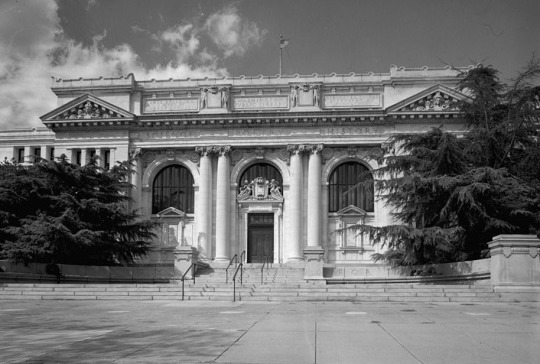
But for the most part, the robber barons of the Gilded Age were hated for their monopolistic behavior and their use of violence to suppress the working class - and these magnates often had to go to great lengths to repair their reputations. Andre Carnegie's library-building campaign, for example, was very much a PR move meant to soften his image after the Homestead Strike. In fact, my great-grandfather Humphrey Attewell helped to organize opposition to the construction of a Carnegie library in Northampton, because he and other working-class people felt that the funds for the library were blood money distributed by a murderer. Likewise, it's not an accident that John D. Rockefeller founded the Rockefeller Foundation right around the same time that the Ludlow Massacre turned him into a monster in the eyes of the American public.
I would argue that we start to see more of a cult of personality around the mega-wealthy a bit later - say, 1900s-1930s - and the major turning point was the career of Thomas Edison. While Edison was every bit as ruthless and grasping as the robber barons before him - hence the war of the currents, his penchant for patent theft and/or stealing credit for inventions, the very existence of Hollywood - the fact that he was an inventor with so many world-changing patents to his name made Edison into a very different kind of media figure. Thomas Edison became a star of pulp fiction and dime novels, a sort of proto-superhero Science Hero - in addition to Edison's Conquest of Mars (an unauthorized sequel to the War of the Worlds in which Thomas Edison gets revenge for the Martian invasion of Earth by launching a counter-invasion of the red planet with his superior technology), there was a whole genre of Edisonades all about young inventor geniuses who use their inventions to save the day and/or explore the "savage frontier."

I think you can draw a line from the cult of personality around Edison to the cult of personality that formed around Henry Ford in the 20s and 30s as not just a car manufacturer but a visionary who had created a new age of modernity, and from there to the legend of the Packard garage, and from there to contemporary Silicon Valley.
57 notes
·
View notes